Contents
The harvest of zucchini directly depends on how well the pollination of flowers took place. In this case, the main pollinator is insects, which, for a number of reasons, can do their job “in bad faith” and deprive the owner of the crop. You can avoid such troubles at the stage of seed selection.
So, self-pollinated varieties of zucchini allow you to get a stable crop, regardless of the weather, the presence of insects and other factors.. Moreover, breeders offer a wide range of such zucchini, which allows each gardener to find a vegetable to his taste. Popular self-pollinating varieties adapted for growing in open areas, as well as in greenhouses and greenhouses, are listed below.
Early maturing varieties
Early maturing, self-pollinating varieties, which are successfully grown indoors in early spring, allow you to get the first harvest as early as May-June. In the presence of a heated greenhouse, the harvest can be obtained even earlier. If necessary, you can use the seedling method of cultivation. For such early sowings, the choice of the gardener below is the best varieties of self-pollinated zucchini.
Kawili F1
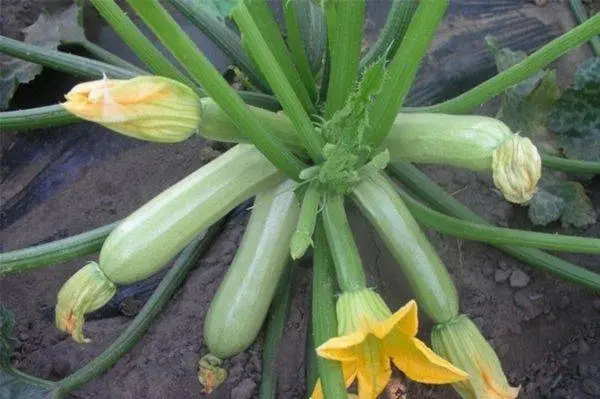
This hybrid was bred by Dutch selection. Its fruits ripen 40-45 days after seed germination. The plant is successfully grown both in greenhouses and in open areas. The bush is compact, which allows you to have 4 plants per 1 m2 soil. The plant bears fruit for a long period, until late autumn. The yield of the variety reaches 9 kg / m2.
The fruits do not exceed 22 cm in length, their average weight is 320 g. The shape of the fruit is cylindrical, the color of the skin is light green, the flesh of the zucchini is white or with a slight greenish tinge. The taste of the vegetable is excellent: the pulp is juicy, tender, crispy. However, due to the low sugar content, the manufacturer does not recommend eating it fresh. At the same time, the vegetable is great for cooking culinary dishes and winter preparations.
You can see an example of growing self-pollinated zucchini of the Kavili F1 variety in the video below:
Iskander F1

Zucchini is a parthenocarpic hybrid. It was bred in Holland, but is especially popular in domestic latitudes, since it is able to abundantly set fruits even at low summer temperatures and adverse climatic conditions. The variety is early ripe, its fruits ripen in 40-45 days after seed germination. The culture is resistant to many diseases, including those characteristic of a greenhouse environment with high humidity.
Iskander F1 is successfully grown in open and protected areas. It is recommended to sow zucchini seeds in April. The bushes are upright, compact, it is recommended to place them in 4 pieces per 1 m2 soil. The variety is characterized by high yields up to 15,5 kg/m2.
The fruits are light green in color. Their skin is very thin and delicate. The length of the zucchini reaches 20 cm, the average weight of one fruit is about 500 g. The pulp of the zucchini is white or creamy, distinguished by its special tenderness and juiciness. You can see the Iskander F1 zucchini in the photo.
On the video you can see the rules for growing this variety, evaluate the yield, hear the feedback from an experienced farmer:
Parthenon F1
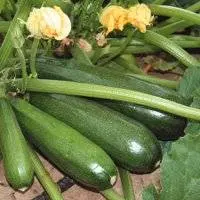
This hybrid is also a representative of the Dutch selection. Self-pollination of the flowers of this plant allows you to get a rich harvest of up to 15 kg / m2 even under the most adverse weather conditions, as well as in a barrier environment for insects (greenhouses, greenhouses). The plant is compact, not very growing, so the recommended sowing density of seeds is 3-4 pcs per 1 m2 soil. Fruits ripen 40-45 days after germination. Zucchini is characterized by a particularly long period of fruiting, until the end of September.
Zucchini varieties Parthenon F1 have a dark green color. Their shape is cylindrical, even, smooth. The pulp of the fruit is light green, juicy, dense, tasty. Zucchini is suitable not only for cooking, canning, but also for consumption raw. The vegetable is suitable for long-term storage. The length of the fetus reaches 20-25 cm, weight is about 300 g.
Dry F1
Hybrid Dry F1 belongs to the category of ultra-early, because it is able to please with its fruits already 35-40 days after germination. Perfectly adapted for growing in open areas, as well as in greenhouses, greenhouses. It is recommended to sow seeds in May with a frequency of 3 bushes per 1 m2 soil. The plant is demanding for regular watering, loosening, weeding, top dressing. In gratitude for proper care, the variety bears fruit in a volume of up to 13 kg / m2.
Zucchini are small, up to 18 cm long, weighing up to 700 g, painted light green. There are small light spots on their surface. The skin of the fruit is thin and smooth. The pulp of the vegetable is tender, dense. It contains a large amount of dry matter, so the variety is not characterized by special juiciness. Fruits can be stored for a long period of time after harvest. Photos of zucchini of this variety can be seen below.
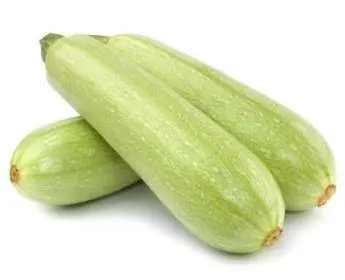
Sangrum F1
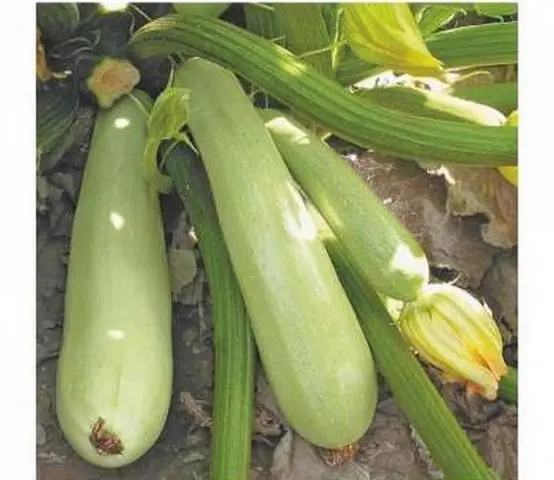
Early maturing, self-pollinating hybrid. Its fruits ripen 38-40 days after seed germination. You can grow a crop both in open ground and in greenhouses. Mature plants are represented by compact bushes, which allows them to be placed 4 pieces per 1 m2 soil. The best time to sow the seed is May. The variety is characterized by friendly fruiting.
Zucchini has a light green skin color. Its shape is cylindrical and smooth. The flesh of the fruit is greenish, tender, medium density. The vegetable contains a large amount of dry matter and sugar, which makes it not too juicy, but suitable for eating raw. The average weight of one zucchini reaches 350 g.
Above are the best varieties of self-pollinated zucchini. They are perfectly adapted to average climatic conditions and are able to produce a stable crop, regardless of external factors. Some of them have record yields, and some are great for eating raw. Varieties have an early ripening period, which allows you to get the first harvest in early summer.
Unique varieties
There are not too many self-pollinated squash. Unlike cucumbers, they are a relative novelty on the seed market, however, due to their high palatability and unpretentiousness, they are popular with gardeners and have earned a lot of positive feedback from them.
Among the usual parthenocarpic varieties, there are such unique types of zucchini, which, in addition to high productivity and unpretentiousness to weather conditions, attract attention with the unusual shape of a bush or fruit, the color of a zucchini. These unique varieties include:
Atena Polka F1
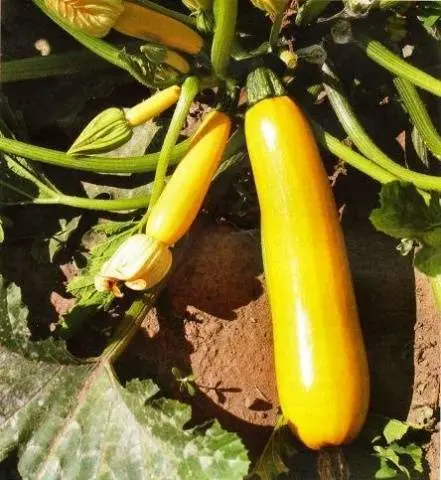
When choosing seeds, you involuntarily pay attention to these bright orange zucchini. They are self-pollinating and are able to bear fruit profusely even in the most meager weather conditions. The plant is a hybrid, adapted to growing in protected and open ground. Has resistance to many diseases.
It is recommended to sow seeds of this variety in May, when the ground temperature is not lower than +100C. The period of ripening of its fruits is approximately 50-55 days after seed germination. The bushes of the plant are small, which allows you to place 4 bushes per 1 m2 earth. Some gardeners prefer to sow 2-3 seeds in one hole at once, and after germination, weaker plants are removed.
The advantage of the variety, of course, is not only the bright color of the fruit, but also the excellent taste of the pulp. It is creamy, juicy, tender and very sweet. It is mostly consumed fresh, but it is also suitable for canning. The size of the fruit is small: length up to 20 cm. The yield of the variety reaches 11 kg / m2.
Jellyfish F1

This hybrid got its name from the intricate shape of the bush, which can be seen in the photo below. The compact plant does not take up much space, it can be grown in open ground or in greenhouses. The self-pollinated variety is considered super early, its fruits ripen in 35 days from the day the seed is sown. Jellyfish F1 has a high yield of up to 9 kg/m2.
Zucchini of this variety are club-shaped, smooth, painted in light green color. Their flesh is also with a greenish tinge, dense, sweetish. The peel is thin, tender, does not coarsen when the fruit ripens. The vegetable practically does not contain a seed chamber. The average length of a zucchini is 25 cm, weight reaches 800 g.
Squash tree F1
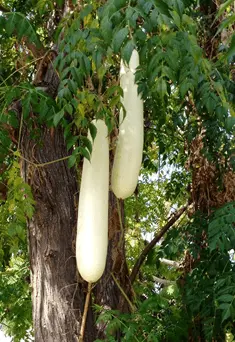
Zucchini on a tree is a fantasy for someone, but for someone a real culture in the garden. The self-pollinating hybrid “Zucchini tree F1” is represented by a bushy plant, the length of the lashes of which reaches 4-5 meters. Long lashes are so powerful that they can twist along supports, which are often trees. At the same time, zucchini is successfully held until full ripening.
The culture is unpretentious in care, resistant to temperature extremes and drought. Zucchini has practically no empty flowers and bears fruit abundantly. The variety is early, its fruits ripen on average 70 days after seed germination. In general, the culture bears fruit until late autumn.
The vegetable is small, up to 14 cm long, painted in light green color. Its skin is thin, does not stiffen as the fetus ripens. The taste of the pulp is good. Zucchini is suitable for cooking.
Conclusion
Choosing a self-pollinating zucchini variety is already the key to a good harvest. However, if the rules for growing a crop are observed, the yield and taste of any variety can be significantly improved. You can learn more about cultivating zucchini in the video:










What are some companies that sell these seeds? Thank you.